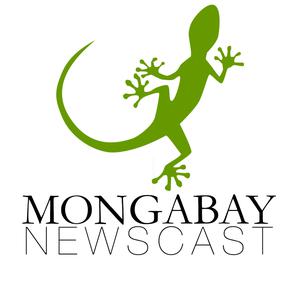
Mongabay Newscast
Mongabay.com
- 47 minutes 33 secondsGrounded: This pilot quit flying to help the aviation industry change, for the better
Todd Smith wanted to be a pilot since the age of 5, but an epiphany spurred by seeing a retreating ice cap in Peru revealed that his love of flying conflicted with the planetary harm his industry was causing.
“That was the first seed that was planted, and I was witnessing in that moment climate change and mass tourism firsthand,” he says.
Today, Smith is co-founder of Safe Landing, an organization dedicated to advocating for sustainable aviation reform to adapt to the realities of climate change and ensure the future employment of airline workers. On the latest Mongabay Newscast, he details his journey to leave the industry, and shares what he thinks the airline industry needs to change to in order to adapt to our new climate-changed reality.
Like this podcast? Please share it with a friend and help spread the word about the Mongabay Newscast.
Subscribe to or follow the Mongabay Newscast wherever you listen to podcasts, from Apple to Spotify, and you can also listen to all episodes here on the Mongabay website, or download our free app for Apple and Android devices to gain instant access to our latest episodes and all of our previous ones.
Image: Private jet flights account for a small fraction of aviation’s overall emissions — around 4% — though the burden is up to 10 times more per passenger compared to a commercial flight, according to a recent report. Image by lillolillolillo via Pixabay (Public domain).
---
Timecodes
(00:00) Introduction: Todd Smith
(02:10) From airline pilot to climate activist
(12:10) The origins of Safe Landing
(24:04) The future of aviation on a limited carbon budget
(37:10) The inequities of flying
(45:53) Credits
12 November 2024, 7:34 pm - 41 minutes 46 secondsDon't call it the ‘high seas treaty’: New oceans agreement should center biodiversity, expert says
The new BBNJ (biodiversity beyond national jurisdiction) marine conservation agreement is impressive in scope but has since been rebranded by some as the “high seas treaty,” which risks biasing its interpretation by emphasizing the historical, but outdated, freedoms enjoyed by seafaring (and largely Western) nations.
Elizabeth Mendenhall of the University of Rhode Island joins this episode to discuss the treaty with co-host Rachel Donald, detailing the fascinating and complicated nature of ocean governance beyond the jurisdiction of states. The BBNJ agreement was designed to resolve some of these governance issues, but the text contains ample gray area in how the principles of “common heritage,” the concept that something belongs to all of humanity, will apply to the protection and extraction of resources from the water column and seafloor.
“The treaty design that we ended up with [from] my perspective is not really suited to achieve what it is we say we want to do, which is to create a big network of marine protected areas that's effective in terms of protecting biodiversity,” Mendenhall says.
To learn more and find links to the treaty documents, see the commentary Mendenhall co-authored for Mongabay about the topic earlier this year, here.
Like this podcast? Please share it with a friend and help spread the word about the Mongabay Newscast.
Subscribe to or follow the Mongabay Newscast wherever you listen to podcasts, from Apple to Spotify, and you can also listen to all episodes here on the Mongabay website, or download our free app for Apple and Android devices to gain instant access to our latest episodes and all of our previous ones.
Image Credit: Baleen whales (Megaptera novaeangliae). Image by ArtTower via Pixabay (Public domain).
---
Timecodes
(00:00) Introduction
(02:51) How biodiverse are oceans?
(05:20) What's at stake?
(07:47) How are the oceans governed?
(10:47) How international ocean management organizations work
(17:13) What is the treaty for?
(21:21) Is it a marine protected area if you can still exploit it?
(27:55) BBNJ vs. 'High Seas'
(29:09) Principles of High Seas and Common Heritage
(35:35) Post-show
(40:13) Credits
29 October 2024, 8:37 pm - 29 minutes 58 secondsGlobal Nature Positive Summit features Indigenous & conservation leaders but gets negative marks on government action
Just prior to the latest world biodiversity summit (COP 16 in Colombia), a similarly-themed event was hosted by the Australian Government in Sydney: the Global ‘Nature Positive’ Summit featured Indigenous leaders, scientists and conservationists, but political leaders in attendance provided little insight into when key reforms to the Environmental Protection and Biodiversity Conservation Act would take place, which experts, lawyers, and activists have been calling for.
For this episode, Mongabay speaks with delegates to the summit including Barry Hunter, a descendent of the Djabugay people and the CEO of The North Australian Indigenous Land and Sea Management Alliance (NAILSMA), Éliane Ubalijoro, the CEO of CIFOR-ICRAF, and also Ben Pitcher, a behavioral biologist with the Taronga Conservation Society.
These guests share their expertise on the state of biodiversity, what kind of action they want to see from leaders, and what can be done to safeguard species while ensuring First Nations rights.
Image Credit: Barry Hunter on his Country (Djabugay Country) at Mona Mona. Image by Seth Seden.
----
Timecodes
(00:00) Introduction
(02:05) A lack of government action
(04:04) Interview with Barry Hunter
(15:31) Interview with Eliane Ubalijoro
(20:24) Interview with Ben Pitcher
(28:16) Credits
22 October 2024, 7:56 pm - 1 hour 19 minutesJane Goodall and Rhett Butler celebrate Mongabay’s 25th anniversary
The Mongabay Newscast recently traveled to San Francisco to join an event hosted by the popular radio show and podcast, Climate One, reflecting on both Mongabay’s 25th anniversary and Jane Goodall’s 90th birthday, for a live audience of 1,700.
First, Mongabay founder and CEO Rhett Ayers Butler discusses the news outlet’s biggest successes and impact over a quarter of a century, and then Climate One founder and host Greg Dalton engages Butler and Goodall in conversation about the state of environmental news, the biggest issues they’re working on, their inspirations, and what Goodall wants more people to think about during what she calls a crucial election year.
Here's additional discussion of Mongabay’s 25th anniversary,
Mongabay at 25: A reflection on the journey and future
This is our previous episode where Goodall shares additional thinking on these issues:
Jane Goodall at 90: On fame, hope, and empathy
Like this podcast? Please share it with a friend and help spread the word about the Mongabay Newscast.
Subscribe to or follow the Mongabay Newscast wherever you listen to podcasts, from Apple to Spotify, and you can also listen to all episodes here on the Mongabay website or download our free app for Apple and Android devices to gain instant access to our latest episodes and all of our previous ones.
Image Credit: Rhett Ayers Butler and Jane Goodall in conversation in San Francisco. Image by Alejandro Prescott-Cornejo/Mongabay.
---
Time Codes
(00:00:00) Introduction
(00:00:59) Rhett’s reflections on 25 years of Mongabay
(00:02:27) What makes for a successful newsroom?
(00:07:50) Looking to the future
(00:17:47) Jane Goodall and Rhett Butler in conversation with Climate One
(01:17:30) Credits
15 October 2024, 7:41 pm - 56 minutes 39 secondsCommunity conservation, Indigenous rights, and phasing out fossil fuels at Climate Week NYC
An array of top voices are interviewed or heard on this episode straight from Climate Week in New York, a global gathering of leaders and experts working in the climate and environmental sectors on proactive policies and practical initiatives.
The podcast speaks with several individuals on topics ranging from a fossil fuel non-proliferation treaty that’s gaining steam currently to ways of improving the financing of Indigenous communities and conservation organizations working in Africa, and many others. Here’s who appears on the show:
Allison Begalman, co-founder of the Hollywood Climate Summit
Amitabh Behar, executive director of Oxfam International
Tzeporah Berman, chair of the fossil fuel non-proliferation treaty
Luisa Castaneda, deputy director of Land Is Life
Paul Chet Greene, member of the House of Representatives of Antigua and Barbuda
Susana Muhamad, minister of environment and sustainable development of Colombia
Mohamed Nasheed, former president of the Maldives
Maria Neira, director of the Department of Public Health and Environment at the World Health Organization
Sam Shaba, CEO of Honeyguide
Like this podcast? Please share it with a friend and help spread the word about the Mongabay Newscast.
Subscribe to or follow the Mongabay Newscast wherever you listen to podcasts, from Apple to Spotify, and you can also listen to all episodes here on the Mongabay website, or download our free app for Apple and Android devices to gain instant access to our latest episodes and all of our previous ones.
Image Credit: Indigenous activists during an End of the Fossil Fuels event during Climate Week 2023. Image courtesy of the Confederation of Indigenous Organizations of the Amazon Basin (COICA).
---
Time Codes
(00:00) Mongabay at Climate Week NYC
(01:34) Mohamed Nasheed
(04:35) Paul Chet Greene
(05:52) Amitabh Behar
(07:23) PLANETWALKER with Allison Begalman
(12:15) Funding justice with Luisa Castaneda
(18:19) Community-led conservation with Sam Shaba
(24:44) The fossil fuel non-proliferation treaty
(29:19) Juan Bay and the Waorani Nation endorsement
(36:49) Maria Neira from the World Health Organization
(38:39) Susana Muhamad on Colombia’s endorsement
(44:07) Tzeporah Berman talks treaty
(53:32) Rainforest reception and a song
8 October 2024, 7:13 pm - 43 minutes 21 secondsHigh CO2 levels are greening the world’s drylands, is that good news?
Drylands are vast and home to a wide array of biodiversity, while also hosting a large portion of the world’s farmland, but they face continued desertification, despite many of them recently experiencing increased vegetation levels.
Five million hectares (12 million acres) of drylands, an area half the size of South Korea, have been desertified due to climate change since 1980, but elevated CO2 levels are also driving a regreening of some areas, which some argue is a positive effect of pumping CO2 into the atmosphere.
However, our guest on this episode says this isn’t necessarily good news: remote-sensing researcher Arden Burrell describes how the CO2 fertilization effect is greening some dryland ecosystems, and why this worries scientists who say it may mask land overuse and decreased water resources.
Read the study here: https://www.nature.com/articles/s43247-024-01463-y
Like this podcast? Please share it with a friend and help spread the word about the Mongabay Newscast.
Subscribe to or follow the Mongabay Newscast wherever you listen to podcasts, from Apple to Spotify, and you can also listen to all episodes here on the Mongabay website, or download our free app for Apple and Android devices to gain instant access to our latest episodes and all of our previous ones.
Image Credit: Green areas saw a growth in foliage from 2000 to 2017, while brown areas represent a reduction. Image courtesy of Joshua Stevens/NASA Earth Observatory.
Time Codes
---
(00:00) Introduction
(02:50) Drylands and desertification
(04:19) Impacts of climate change on drylands
(09:33) The CO2 fertilization effect
(23:34) Digging into the models
(30:16) Implications for land overuse
(35:54) Post-show
(41:42) Credits
1 October 2024, 8:47 pm - 27 minutes 25 seconds“What If We Get It Right?” marine biologist & climate action author Ayana Elizabeth Johnson asks
Marine biologist and climate policy advocate Ayana Elizabeth Johnson joins this episode to discuss her latest book, What If We Get It Right? Visions of Climate Futures, a compilation of essays and interviews with experts and authors in the climate and environmental fields.
Her book sensitively probes the problems human society faces and potential pathways to address environmental injustice, from the unsustainable industrialization of our food systems to the inequity (or lack) of climate policy in many places.
Co-host Mike DiGirolamo speaks with Johnson about key insights from her book’s array of interviews, plus lessons learned from fighting for climate policy herself in the form of a “Blue New Deal.”
Like this podcast? Please share it with a friend and help spread the word about the Mongabay Newscast.
Subscribe to or follow the Mongabay Newscast wherever you listen to podcasts, from Apple to Spotify, and you can also listen to all episodes here on the Mongabay website or download our free app for Apple and Android devices to gain instant access to our latest episodes and all of our previous ones.
Image Credit: Ayana Elizabeth Johnson holding a copy of her book “What If We Get It Right? Visions of Climate Futures.” Image courtesy of Ayana Elizabeth Johnson.
---
Timecodes
(00:00) Introduction
(01:06) What If We Get It Right? A brief review
(05:10) The barriers to change
(09:20) What is 'biophilia'?
(10:42) Agriculture doesn't have to be this way
(12:52) Unsung advice
(16:12) It's all about heat pumps
(18:36) The role of media in covering protests
(21:50) An ocean policy odyssey
(25:43) Credits
24 September 2024, 6:41 pm - 41 minutes 29 secondsPrivate profit from public lands: How a Cambodian elite with military ties claimed a community forest
The Phnom Chum Rok Sat community forest used to support local and Indigenous groups in Cambodia’s Stung Treng province, as well as a thriving local ecotourism venture, but that all changed this year when mining company Lin Vatey privately acquired roughly two-thirds of the land and began clearing the forest.
Mongabay features writer Gerry Flynn investigated how this happened with freelance reporter Nehru Pry, and speaks with co-host Mike DiGirolamo about how the 10 individuals behind the land grab, many of whom have connections to powerful Cambodian military officials and their families, managed this land grab. Local community members who have resisted currently face legal intimidation and arrests.
While community forests, such as Phnon Chum Rok Sat, are supposed to belong to the public, this kind of corporate acquisition of land is commonplace in the nation, Flynn says.
“As we see a lot in Cambodia, it’s public forests being turned into private fortunes.”
Like this podcast? Please share it with a friend and help spread the word about the Mongabay Newscast.
Subscribe to or follow the Mongabay Newscast wherever you listen to podcasts, from Apple to Spotify, and you can also listen to all episodes here on the Mongabay website, or download our free app for Apple and Android devices to gain instant access to our latest episodes and all of our previous ones.
Image Credit: Lin Vatey's original mining site inside Phnom Chum Rok Sat threatens to consume the entire forest according to documents seen by Mongabay. Image by Gerald Flynn/Mongabay.
---
Timecodes
(00:00) Introduction
(02:56) A once vibrant community forest
(06:04) Cordoned off from the land
(08:48) Liv Vatey moves in
(17:03) Letter number 1456
(26:24) Arrests and intimidation
(30:06) Ecotourism efforts shut down
(34:14) The 'mental gymnastics' of a government spokesperson
(37:12) Credits
17 September 2024, 8:16 pm - 45 minutes 26 secondsThe rights of nature, legal personhood & other new ways laws can protect the planet
“Legal personhood” and laws regarding the “rights of nature” are being trialed in nations worldwide, but whether they lead to measurable conservation outcomes is yet to be seen, says environmental economist Viktoria Kahui. Still, she says on this episode of the Mongabay Newscast that she’s very hopeful about them.
There’s a global debate surrounding these laws’ efficacy as a tool for conservation, and growing uneasiness about how they may impose a Western viewpoint upon something as inherently complex and extralegal as nature. Some critics argue that such a concept not only transcends the legal system but also cannot be subjected to it without harming the people and places these laws are intended to empower.
Yet Kahui argues that there’s potential for rights-of-nature laws to develop in context-dependent scenarios, where humans can advocate on behalf of nature in places like Ecuador, which she says is a particularly powerful example.
Read more about legal personhood and the rights of nature here:
Is ‘legal personhood’ a tool or a distraction for Māori relationships with nature?
New guidebook supports U.S. tribal nations in adopting rights-of-nature laws
Like this podcast? Please share it with a friend and help spread the word about the Mongabay Newscast.
Subscribe to or follow the Mongabay Newscast wherever you listen to podcasts, from Apple to Spotify, and you can also listen to all episodes here on the Mongabay website, or download our free app for Apple and Android devices to gain instant access to our latest episodes and all of our previous ones.
Image Credit: Blue water of the Quinault river, Olympic Rainforest. Image by Rhett Butler.
Time Codes
---
(00:00) Introduction
(00:58) The global debate on rights of nature
(03:52) Can these laws protect biodiversity?
(07:58) Challenges for legal personhood
(14:10) The advantage of using rights of nature
(24:21) Philosophical qualms with anthropocentric laws
(28:55) How laws can shape our relationships with nature
(33:00) The 'big possibility'
(40:56) There's no silver bullet
(44:01) Credits
3 September 2024, 8:40 pm - 41 minutes 31 secondsHow coastal communities are adapting to rising seas naturally with Living Shorelines
Homeowners and towns along the U.S. East Coast are increasingly building “living shorelines” to adapt to sea level rise and boost wildlife habitat in a more economical and less carbon-intensive way than concrete seawalls. These projects protect shorelines using a clever mix of native plants, driftwood, holiday trees, and other organic materials.
Peter Slovinsky, a coastal geologist with the Maine Geological Survey, joins the Mongabay Newscast to discuss the benefits of living shorelines, how they are implemented in his state, and what other techniques coastal communities should consider in a world with a warming climate and rising seas.
Read Erik Hoffner’s original reporting on living shorelines here.
Like this podcast? Please share it with a friend and help spread the word about the Mongabay Newscast.
Subscribe to or follow the Mongabay Newscast wherever you listen to podcasts, from Apple to Spotify, and you can also listen to all episodes here on the Mongabay website, or download our free app for Apple and Android devices to gain instant access to our latest episodes and all of our previous ones.
Image Credit: Salt tolerant plants are part of a ‘living shorelines’ project on the Blue Hill Peninsula in Maine. Image by Erik Hoffner for Mongabay.
Time Codes
---
(00:00) Introduction
(02:19) What is a “living shoreline?”
(04:55) Green over gray
(13:06) How to make a “living shoreline”
(18:59) Case studies and urban applications
(24:50) Adaptation methods that deserve more consideration
(31:13) Reconsidering retreat
(32:48) The geologist’s greatest fears and biggest hopes
(39:35) Credits
27 August 2024, 8:27 pm - 27 minutes 34 secondsExperts warn bird flu poses ‘an existential threat’ to biodiversity, and a possible threat to humans
The current clade of H5N1 or bird flu is an "existential threat" to the world’s biodiversity, experts say. While it has infected more than 500 bird and mammal species on every continent except Australia, the number of human infections from the current clade (grouping) 2.3.4.4b is still comparatively small. U.S. dairy workers have recently become infected, and the virus could easily mutate to become more virulent, our guest says.
Joining the Mongabay Newscast to talk about it is Apoorva Mandavilli, a global health reporter for The New York Times. Mandavilli details what virologists and experts know about the human health risks associated with this latest clade, what nations are doing (or not doing) to help contain its spread, and why. She also details how environmental degradation and industrial agriculture help create the conditions for outbreaks like this to occur.
Read Sharon Guynup’s reporting on it here.
Like this podcast? Please share it with a friend and help spread the word about the Mongabay Newscast.
Subscribe to or follow the Mongabay Newscast wherever you listen to podcasts, from Apple to Spotify, and you can also listen to all episodes here on the Mongabay website, or download our free app for Apple and Android devices to gain instant access to our latest episodes and all of our previous ones.
Image Credit: Highly pathogenic avian influenza killed thousands of black-browed albatross (Thalassarche melanophris) chicks in the Falkland Islands and Islas Malvinas, where two-thirds of the entire population lives. Image © Julia Emerit and Augustin Clessin.
Time Codes
---
(00:00) Introduction
(02:44) The evolution of H5N1
(05:47) Clade 2.3.4.4b
(08:21) Challenges in monitoring the spread
(11:10) What are the human health risks?
(16:34) A spotlight on industrialized animal agriculture
(18:26) A vaccination strategy?
(20:05) What lessons are we learning from other pandemics?
(23:08) The degradation of nature and the frequency of disease outbreaks
(25:57) Credits
20 August 2024, 8:25 pm - More Episodes? Get the App
Your feedback is valuable to us. Should you encounter any bugs, glitches, lack of functionality or other problems, please email us on [email protected] or join Moon.FM Telegram Group where you can talk directly to the dev team who are happy to answer any queries.
 Drilled
Drilled
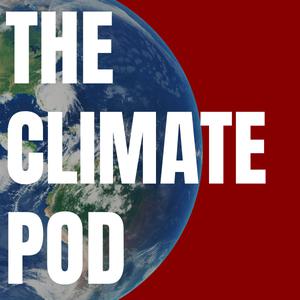 The Climate Pod
The Climate Pod
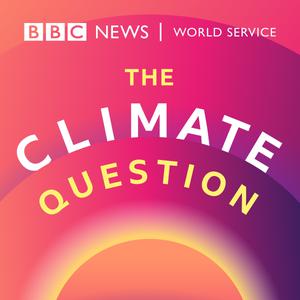 The Climate Question
The Climate Question
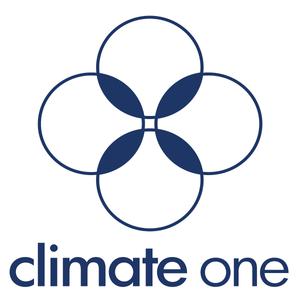 Climate One
Climate One
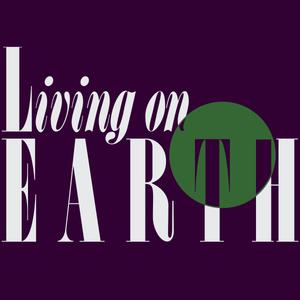 Living on Earth
Living on Earth